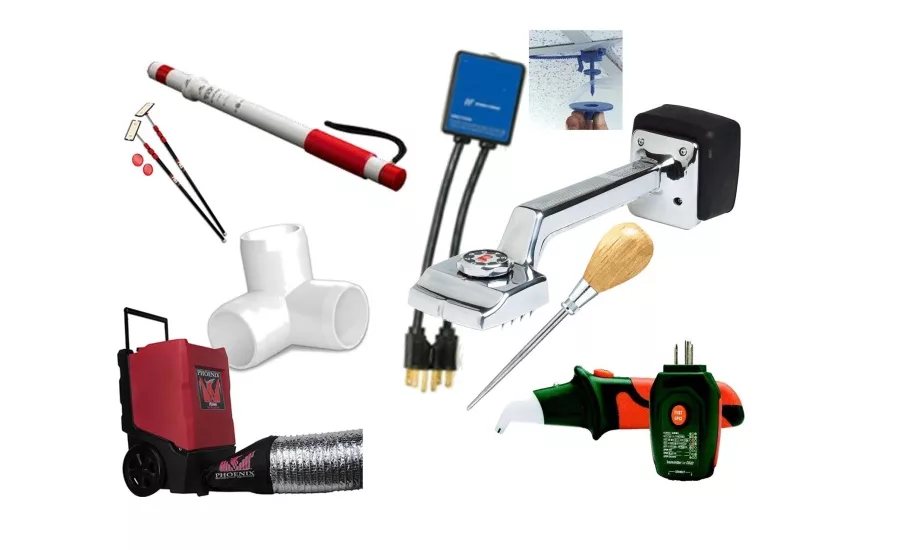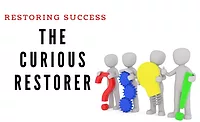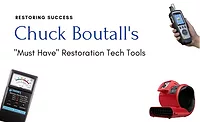Restoring Success: The Oddball Tools in a Restorer's Toolbox

Dehumidifiers, air movers, and meters are just a few of the very broad categories of tools and equipment a restoration professional must be able to access and have in their toolbox. Typically, these are the most obvious investments; these are the items on the list when starting a company and these are the items continually invested in by existing organizations.
From a purpose standpoint, on a very basic level, any tool or piece of equipment you purchase should help you facilitate and perform services. If you want to dry a structure, you need a dehumidifier (obviously talking most basic level). At the next level, tools and equipment can improve your effectiveness, efficiency, and offer improved customer experience.
There is skill involved in adding and evolving your restoration toolbox and you should select, employ, and understand your tools and equipment deliberately.Everyone has bought a tool or piece of equipment that becomes the next dust collector in the corner of the warehouse. Explain to the team why it was purchased and why it will be used. Does the item improve a customer’s experience? Does it make your job easier, which improves efficiency, which improves profitability? Articulate to the team the tool's use, why it is used, and the benefits.
Here is a list of just a few items you may already have and are under-utilized, or that you may want to add to the toolbox.
1. Knee kicker and carpet awl: Carpet should be disengaged with a carpet awl with the assist of a knee kicker. Carpet is at its weakest when wet and by using these tools you are reducing the potential of causing secondary damage, minimizing the severity of the loss, and providing improved service.
2. Circuit analyzer and circuit breaker detector: Utilizing these tools will help you handle the power challenges on your jobs. If you trip breaker and equipment turns off, you have reduced your effectiveness, efficiency, and the customer experience is impacted.
3. Hot Stick: Keeps the team safe. This handy tool will detect live energy even from standing water. A fast and efficient way to evaluate electrical hazards on a loss.
4. Phoenix Duct Adapter is a great, lightweight gadget that gives you the flexibility to connect duct systems and equipment. When your drying plan calls for a connection, you will be glad that this handy adapter is readily available.
5. Containment Supplies: Containment is used for dust control, mold remediation, and to shrink the drying area during water mitigation. Having an inventory of containment supplies on hand will allow you to swiftly build containment systems that do the right job in a variety of spaces. Your inventory should include:
- Flame retardant poly: (6mil recommended)
- Tapes
- Poly hangers
- Tension poles
- PVC fitings: Straight, two-ways, three-ways, four-ways, and five-ways
6. Extraction Tools: Extraction is exponentially more efficient at removing water than evaporating which is why it is in demand of your attention. There are a wide variety of extraction tools and equipment on the market. Evaluate your existing inventory and make sure you have the appropriate mix to accommodate the most effective drying strategies that you can offer those you serve. Understand and be able to articulate the value of utilizing this piece of equipment to your team and those you serve.
As an industry, there is a huge variety of tools and equipment that are designed to increase efficiencies, make our job easier, allow us to do our job better, and even impact the customer’s experience. There are also tools and gadgets from other industries that can help. Always keep an eye out for something that can help you excel. If you see a need for something that does not exist, be inventive.
Prices may vary from a couple of dollars to thousands. Keep a list of all the things you want to put into your toolbox and prioritize. When prioritizing, consider both the direct and indirect value of your purchases. Avoid your next purchase from becoming the next dust collector by properly integrating your added tools and equipment to your operations with communication and training.
Looking for a reprint of this article?
From high-res PDFs to custom plaques, order your copy today!







